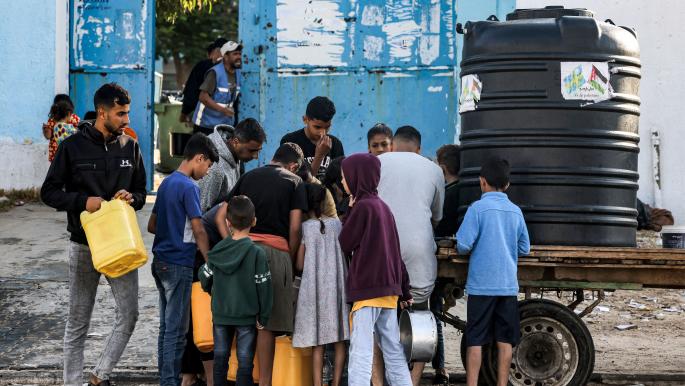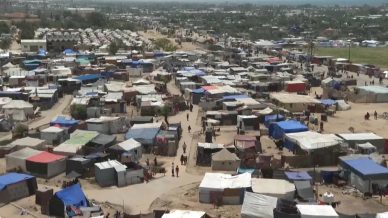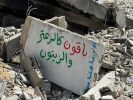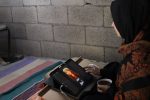Just 48 hours after Operation Al-Aqsa Flood Israeli soldiers were captured in a video cutting off the water supplies coming from Israel to the Gaza Strip. This was in compliance with the decision of the Israeli Minister of Infrastructure Yisrael Katz to “immediately cut off water and energy supplies to the Gaza Strip” as part of a package of sanctions in response to the operation that resulted in the death of more than 1200 Israeli soldiers and settlers.
After 45 days of the ongoing war on Gaza with over 12000 martyrs and the destruction of various vital facilities what is the current state of water in the region? How do the residents obtain it?
Water sources in Gaza before the aggression:
For decades the Gaza Strip has suffered from a water crisis due to the siege and Israeli restrictions that have affected infrastructure. The per capita water allocation according to the Palestinian Central Bureau of Statistics reached 26.8 liters per day in 2022. This is a small amount compared to the 100 liters per day recommended by the United Nations for personal and household use.
Before the aggression Gaza relied on three main water sources:
1. Groundwater wells: Used to extract groundwater from the earth through pumps powered by electricity or fuel Gazans extracted 187.6 million cubic meters of water through these wells. However these wells suffer from pollution due to the infiltration of sewage and seawater causing high salinity. Reportedly 97% of groundwater in Gaza does not meet international drinking water quality standards.
2. Desalination stations: International organizations established desalination stations along the Gaza Strip in places like Deir al-Balah and Al-Sudaniya areas contributing to the supply of 5.7 million cubic meters of water in 2022 according to the Palestinian Central Bureau of Statistics.
3. Pipelines from Israel: The Israeli water company “Mekorot” supplied Gaza with 8 million cubic meters of water annually. Municipalities mixed it with groundwater to increase the available quantity. However this water supply was completely cut off on October 9th.
The state of water in Gaza during the aggression:
The continuous Israeli aggression on Gaza cutting off all water electricity and fuel supplies along with destructive shelling led to a collapse in the per capita water allocation. It dropped to less than 3 liters compared to the pre-aggression 26.8 liters per day representing a 95% decrease in water production capacity.
Gaza is witnessing a real deprivation war due to the inability to operate desalination plants the shutdown of municipal wells due to power outages and fuel shortages and the displacement of over a million people to the south resulting in overcrowding in schools and shelters.
Obtaining water in southern Gaza:
Southern Gaza is facing a severe water crisis despite international organizations moving to work in these areas. Hasan (27 years old) from Khan Yunis in southern Gaza shared the daily struggles of obtaining water since the beginning of the aggression:
1. Personal wells: Dozens of wells stopped operating due to power outages and fuel depletion. Some residents get limited amounts of water by collaborating with well owners who use personal generators or small quantities of fuel to operate them for a few minutes.
2. Desalination stations: All drinking water desalination stations in southern Gaza stopped working entirely due to power outages and fuel shortages. Municipalities are currently supplying limited amounts of fuel to some desalination stations to enable them to operate and provide citizens with water.
3. Municipal network: Municipalities in the south in coordination with the United Nations and international organizations operate their wells for 4-5 hours weekly in intervals providing limited quantities of water to hundreds of homes for domestic use only as it is unsuitable for drinking.
4. Seawater: Many residents in southern Gaza have resorted to collecting seawater and carrying it long distances to their homes for use in toilets washing and bathing. Some try to desalinate it by evaporating it using wood fire but these attempts have not yielded tangible results so far.
Hundreds of thousands of people in northern Gaza especially in Jabalia camp and the eastern and central areas of Gaza City are still in their homes despite the ongoing intense bombardment.
Adnan (30 years old) from Jabalia camp explained the water situation in northern Gaza and the methods of obtaining it in the face of the escalating continuous aggression:
Desalination stations continued operating until the first week of the ongoing aggression on Gaza distributing water to homes systematically and in limited quantities. However they eventually stopped working due to fuel depletion.
Water sources completely stopped except for some wells belonging to municipalities that operate for 3-4 hours intermittently weekly supplying water to neighborhoods once a week. This water is groundwater unsuitable for human consumption but due to its scarcity and the lack of alternatives it has become the only source of drinking water.
As the Israeli siege tightens and the aggression intensifies particularly in northern Gaza and with international organizations evacuating their offices in Gaza and the north and abandoning their responsibilities there the water crisis continues to worsen. The people of Gaza face extreme challenges in accessing clean and sufficient water exacerbating the humanitarian crisis in the besieged enclave.














